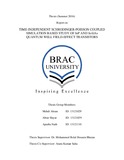| dc.contributor.advisor | Bhuian, Dr. Mohammed Belal Hossain | |
| dc.contributor.advisor | Saha, Atanu Kumar | |
| dc.contributor.author | Ahsan, Mehdi | |
| dc.contributor.author | Hayat, Abrar | |
| dc.contributor.author | Nath, Apurba | |
| dc.date.accessioned | 2016-09-18T08:09:15Z | |
| dc.date.available | 2016-09-18T08:09:15Z | |
| dc.date.copyright | 2016 | |
| dc.date.issued | 2016 | |
| dc.identifier.other | ID 13121029 | |
| dc.identifier.other | ID 13121039 | |
| dc.identifier.other | ID 13121110 | |
| dc.identifier.uri | http://hdl.handle.net/10361/6401 | |
| dc.description | This thesis report is submitted in partial fulfillment of the requirements for the degree of Bachelor of Science in Electrical and Electronic Engineering, 2016. | en_US |
| dc.description | Cataloged from PDF version of thesis report. | |
| dc.description | Includes bibliographical references (page 46-47). | |
| dc.description.abstract | The electronics industry first started appreciating QWFETs over MOSFETs back in late 2011 due the QWFET’s unique wrapped gate around channel structure, which provided better control over threshold voltage and reduced operating voltage. Our main purpose was to observe the changes in the gate capacitance of QWFETS with InP as the upper barrier compared to InAlAs as the upper barrier. So we devised a Schrodinger-Poisson coupled simulation in COMSOL® Multiphysics®. The Poisson Equation in our simulation was used to determine the conduction band profiles across the geometry and the Schrodinger Equation was used to find the corresponding probability densities of electrons. We performed the above experiments in both doped and undoped conditions with both InP and InAlAs as upper barriers with increasing gate voltages to see the changes. At the end, we could infer that devices with doped variants of both InP and InAlAs as the upper barrier had better yields of gate capacitance than the undoped materials themselves and more importantly doped InAlAs as the upper barrier had much better yields of capacitance than doped InP as the upper barrier. | en_US |
| dc.description.statementofresponsibility | Mehdi Ahsan | |
| dc.description.statementofresponsibility | Abrar Hayat | |
| dc.description.statementofresponsibility | Apurba Nath | |
| dc.format.extent | 47 pages | |
| dc.language.iso | en | en_US |
| dc.publisher | BRAC University | en_US |
| dc.rights | BRAC University thesis are protected by copyright. They may be viewed from this source for any purpose, but reproduction or distribution in any format is prohibited without written permission. | |
| dc.subject | InP | en_US |
| dc.subject | InAlAs | en_US |
| dc.subject | Schrödinger equation | en_US |
| dc.title | Time-independent schrodinger-poisson coupled simulation based study of InP and InAlAs quantum well field effect transistors | en_US |
| dc.type | Thesis | en_US |
| dc.contributor.department | Department of Electrical and Electronic Engineering, BRAC University | |
| dc.description.degree | B. Electrical and Electronic Engineering | |

